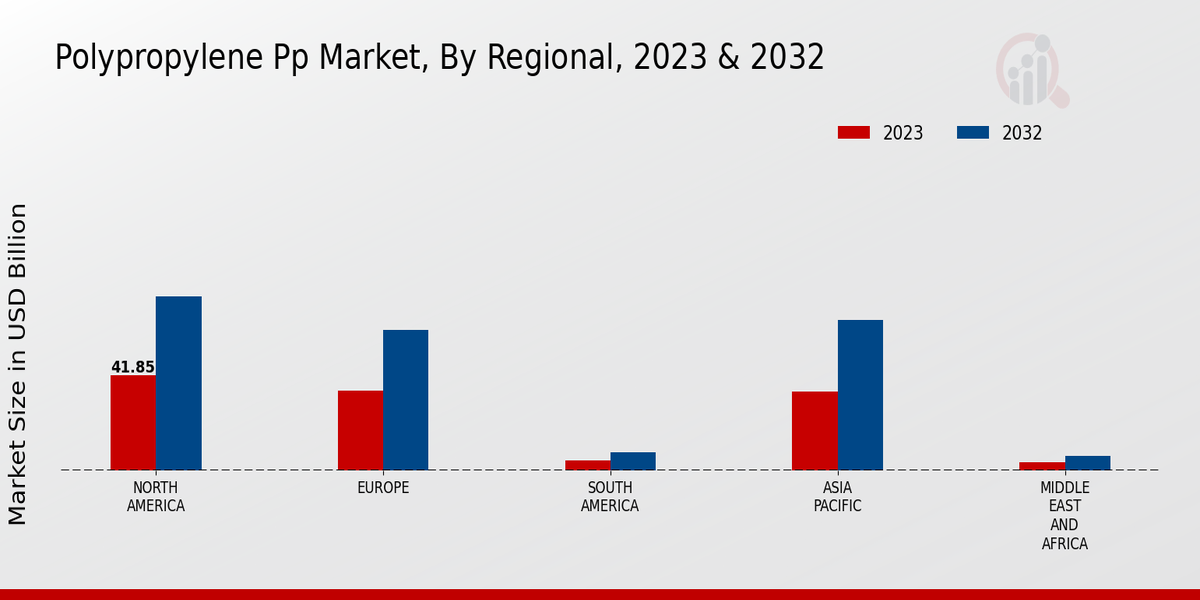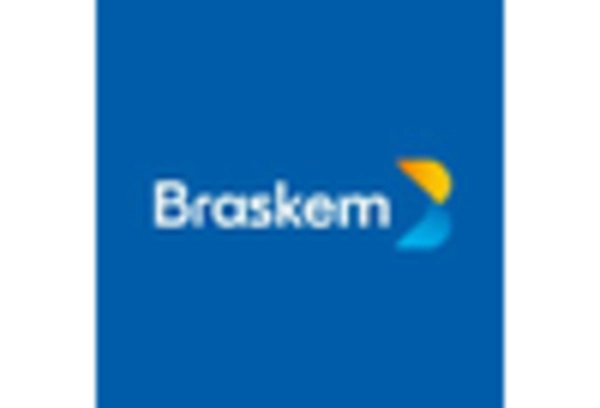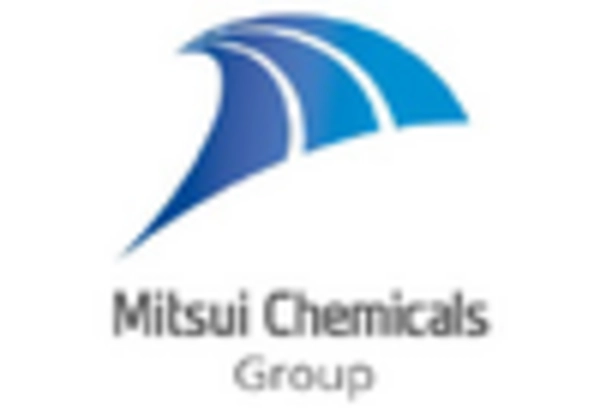Growth in Consumer Goods
The Polypropylene Market is significantly influenced by the expanding consumer goods sector. As disposable income rises, consumers are increasingly purchasing a variety of products, from household items to personal care goods, many of which utilize polypropylene. The material's durability, chemical resistance, and ease of processing make it a preferred choice for manufacturers. Recent data suggests that the consumer goods market is expected to grow at a rate of 3.8% annually, which will likely drive the demand for polypropylene. This trend underscores the importance of polypropylene in the Polypropylene Market, as it continues to meet the evolving needs of consumers.
Automotive Industry Growth
The automotive sector plays a pivotal role in the Polypropylene Market, as manufacturers increasingly utilize polypropylene for its lightweight and cost-effective properties. The material is extensively used in interior components, bumpers, and other parts, contributing to fuel efficiency and overall vehicle performance. With the automotive industry projected to grow steadily, the demand for polypropylene is expected to rise correspondingly. In fact, it is estimated that the use of polypropylene in automotive applications could increase by around 5% annually. This trend indicates a robust future for the Polypropylene Market, as automakers seek to enhance vehicle performance while adhering to stringent regulations.
Rising Demand in Packaging Sector
The Polypropylene Market is experiencing a notable surge in demand, particularly within the packaging sector. This growth is driven by the increasing need for lightweight, durable, and recyclable materials. Polypropylene's excellent barrier properties make it an ideal choice for food packaging, which is projected to grow at a compound annual growth rate of approximately 4.5% over the next few years. As consumers become more environmentally conscious, the shift towards sustainable packaging solutions further propels the demand for polypropylene. The versatility of polypropylene allows it to be molded into various forms, catering to diverse packaging needs, thus solidifying its position in the Polypropylene Market.
Technological Innovations in Production
Technological advancements in the production of polypropylene are reshaping the Polypropylene Market. Innovations such as improved catalytic processes and enhanced polymerization techniques are leading to higher efficiency and lower production costs. These advancements not only increase the quality of polypropylene but also expand its applications across various industries. For instance, the development of high-performance polypropylene grades is enabling its use in more demanding applications, such as medical devices and advanced automotive components. As these technologies continue to evolve, they are likely to bolster the competitiveness of the Polypropylene Market, attracting new investments and fostering growth.
Regulatory Support for Recycling Initiatives
The Polypropylene Market is benefiting from increasing regulatory support for recycling initiatives. Governments are implementing policies aimed at reducing plastic waste and promoting the circular economy, which encourages the recycling of polypropylene. This regulatory environment is fostering innovation in recycling technologies, making it more feasible to reclaim and reuse polypropylene materials. Recent statistics indicate that the recycling rate for polypropylene is expected to increase by 10% over the next five years, driven by both consumer demand and legislative measures. This trend not only enhances the sustainability of the Polypropylene Market but also opens new avenues for growth and development.




















Leave a Comment